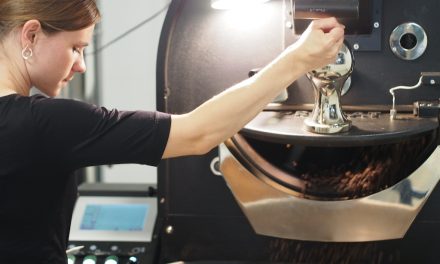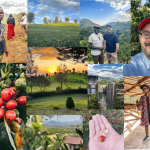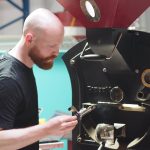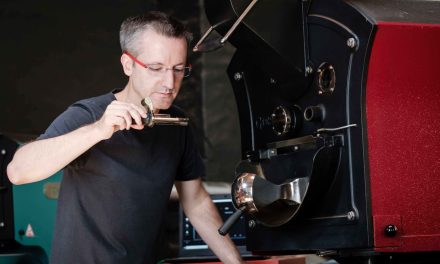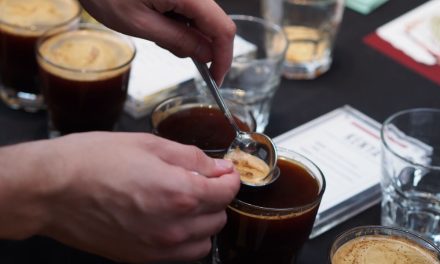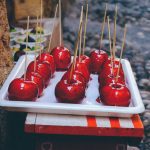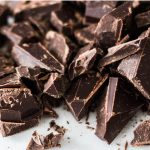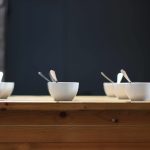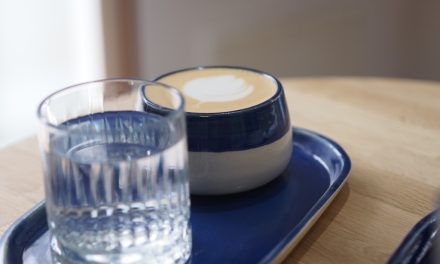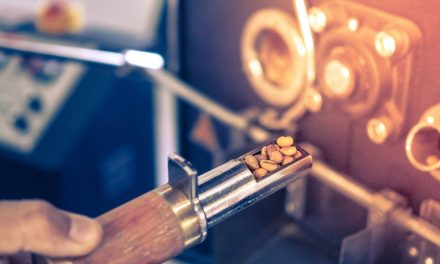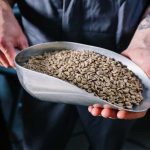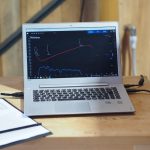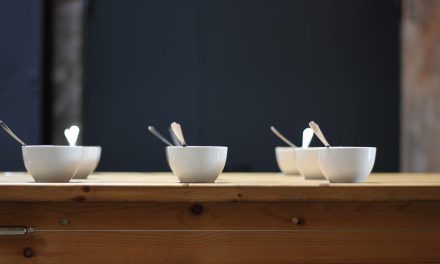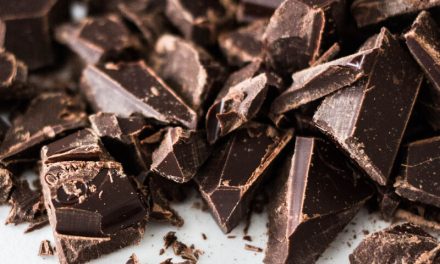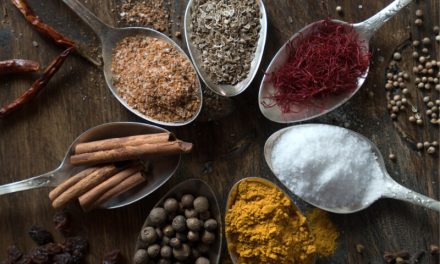
Want to get better at cuptasting? These 3 things you need to understand about sensory analysis
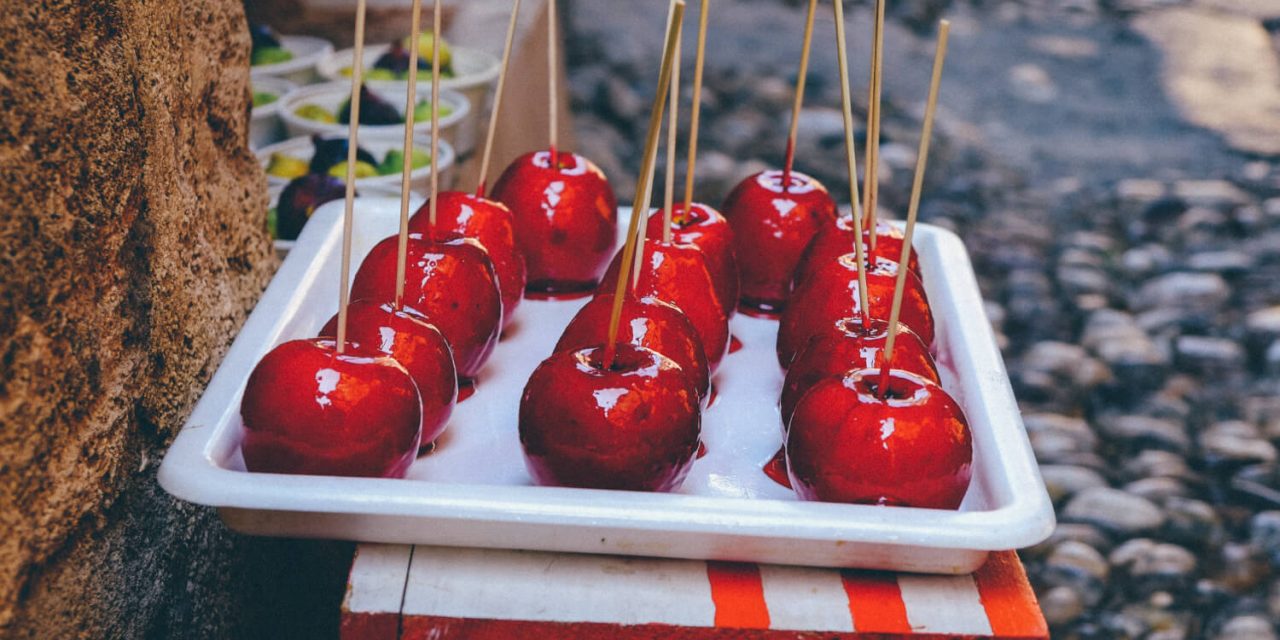
Sensory analysis often seems like sheer chaos: we taste our coffee and are asked to rate the quality or detect defects. We are asked to describe characteristics such as mouthfeel or put flavor into words. We expect a sip on a spoon to tell us which parameters we should adjust in the roasting process.
But how on earth can we tell all that from a single or double sip, when sometimes the only thing we can tell from our tongue is whether we like it or not? A single “sip” of coffee is gone so quickly, and then we’re supposed to analyze it and remember all the details at once?
This article is for you if…
You need a rough guide to orientation in sensory analysis
You are interested in how you can break down the big topic of sensory analysis into small bites
You finally want to see a little more clearly in the topic of sensory analysis
You want to know where you can start training your skills
Your 3 sensory appetizers
Sensory analysis has a framework, just like roasting, like texts, like a roasting machine, like a portafilter.
All the parts make sense and when you know what to look out for, the fog lifts and suddenly everything becomes very, very clear.
So let’s set about dividing the unwieldy field of sensory science into small, more easily digestible parts and call them appetizers. Let’s have a closer look at them and make sensory analysis more accessible:
- Human physiology and anatomy: feeling, tasting, smelling
- Basic taste and flavor
- Sensory analysis and testing methods
#1 Human Physiology and Anatomy
If we want to bring some order to the sensory chaos, we first need to understand how we smell, taste and feel. So, we ask ourselves which of our senses are actually needed. Seeing, for example, is rather an obstacle, so optics do not play a vital role in the sensory evaluation of coffee. This may truly be different for cheese or wine.
Let’s take a brief look at the senses we need:
Smelling takes place via the nose (orthonasal) and via the connection in the throat (retronasal). The information is transmitted directly to the brain via the nasal roof.
Tasting takes place via the taste buds of the papillae in the oral cavity. We recognize whether coffee triggers one or more of the basic tastes.
Feeling also takes place in the oral cavity. We feel the temperature of a coffee, i.e. how warm or how cold it is. We also feel whether the coffee hurts. This happens with coffee more in connection with too high temperatures. Pain reactions such as those triggered by chili or pepper are rarely triggered by coffee. Finally, we sense pressure and touch in the oral cavity.
It is very useful for us to know where the sensations are triggered by coffee and which path these sensations take.
We are now expanding this basis to include our understanding of basic taste and flavors.
#2 Flavor and aroma
Sweet, salty, sour, umami, bitter – these five basic tastes can be triggered by coffee. Each basic taste fulfills a different function in our body:
- Sweet indicates readily available carbohydrates and some proteins, which can taste sweet.
- Salty alerts us to foods that contain essential salts and other minerals.
- A sour taste can indicate that food has gone off.
- Umami indicates that a food has a high amino acid content. We translate the Japanese word as “savory”.
- Bitter tastes perform a warning function in the body. It may indicate that we are dealing with a harmful substance.
We can train each basic taste separately, for example sweet or sour, or in different combinations, for example sweet-sour or sour-umami.
We can increase the difficulty level even further if we build each basic taste into different intensities. This is because there is no such thing as a standard “sweet” or “sour” taste. We always dissolve a lot of sugar or citrus acid in water and modulate different intensities in this way.
And what about aromas?
We perceive aromas in two ways: one is orthonasal, through our nose, and the other is retronasal, through the throat. Perception through the throat occurs in conjunction with taste and touch. We know this as flavor.
In our communication, we distinguish between these two types and these two sensations are also recorded separately in coffee score sheets. On the one hand, we note aroma (orthonasal perception) and flavor (retronasal perception of aromas, texture, taste).
Aromas are fleeting and love contact with air. Aroma molecules in the coffee water therefore rise to the surface and escape into the surrounding air.
We can train our perception of aromas. It is ideal to train aromas separately from each other, as a so-called overshadowing effect can occur with mixtures. And once we have stored aromas under one name, it is very difficult to store them under a different name.
What have we learned so far: We have an understanding of our physiology and anatomy of tasting, smelling and feeling. And we have as well as an understanding of our basic tastes and flavors.
Now we bring all this together in connection with coffee. And that brings us to our third party appetizer, the overview of sensory testing methods.
#3 Sensory analysis and testing methods.
What may sound very formal and complicated at first glance is, on closer inspection, a useful system that helps us to analyze sensory quality (believe me).
We subdivide these test methods into those for coffee professionals and those that are suitable for consumers. The tests by professionals are always analytical tests. The tests by consumers are always hedonic tests.
In hedonic tests, we ask consumers whether they like a coffee or not. In other words, we ask them about taste acceptance. We can also ask consumers about their preferences (“preference tests”). There are different methodological approaches for both types of test, which are statistically evaluated at the end.
Hedonic tests are appealing to consumers because they do not require any product knowledge and are subjective. Practically everyone can participate and say whether they like coffee or not.
For us coffee professionals, the area of analytical testing is relevant. These are standardized tests without personal influences. We distinguish between difference tests and descriptive tests.
Everyone has done or heard of differential tests at some point: these are comparisons of two or more products, for example the triangle test or the in/out test.
Descriptive tests, on the other hand, describe products qualitatively and quantitatively, i.e. in terms of the quantity and quality of a property, for example acidity. These include the simple descriptive test or the consensus profile method.
ISO or DIN are available for all tests, which means that there is a standardization and a common understanding and definition of processes and requirements.
In the coffee sector, we also apply a standard, namely the cupping protocol.
Let’s take a look at our party appetizer platter.
Let’s take a look at our party appetizer platter. Remeber that we divided the field of sensory in 3 appetizers to better break down the chaos.
First, we layed a solid foundation by looking at the physiology and anatomy of tasting, smelling and feeling.
Secondly, we added knowledge about basic tastes and flavors.
And, thirdly, we apply all of this in a very practical way to coffee using various testing methods.
The test methods we use as coffee professionals are always analytical in nature. We break down the coffee on our spoon into its characteristics (sweetness, acidity, body, etc.) and evaluate them. Or we compare coffees with each other in triangle or in/out tests. There is a suitable test for every objective.
What can you do for yourself?
You now have a better idea of the field of sensory analysis and it is no longer a big lump, but a few small party snacks.
Depending on your knowledge and abilities, you can now start training at different points:
You can deepen your theoretical knowledge of anatomy and physiology or train your perception of basic tastes and aromas.
You can also practice various coffee tasting tests. So there are some things you can do yourself and practice for yourself.
Any sensory training is enhanced when you interact with other coffee professionals. If the opportunity arises, don’t miss it!
We have described some tips for improving your sensory skills in this article. Enjoy practicing and getting better!


